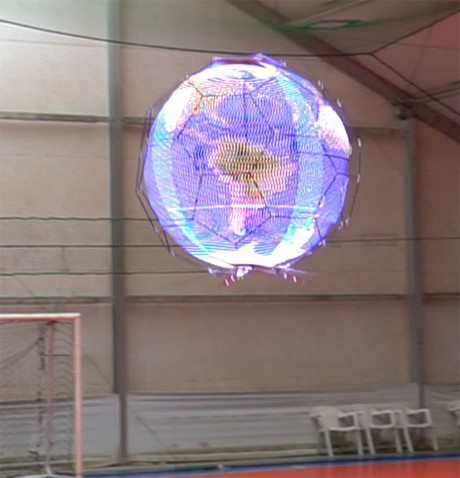Spherical drone display developed

Telecommunications company NTT DOCOMO has developed what it claims is the world’s first spherical drone display — an unmanned aerial vehicle that displays LED images on an omnidirectional spherical screen while in flight.
Equipping a drone with a spherical display has previously proved difficult due to challenges such as the display interfering with the airflow of the drone’s propellers, as well as the added weight of the display. DOCOMO solves this issue by using a largely hollow display that is lightweight and allows air to flow through it, yet still achieves the illusion of a solid display.
The device comprises a spherical external frame, an internal LED frame consisting of a series of eight curved LED strips that extend from top to bottom, a drone fitted inside the sphere and legs protruding underneath. During flight, the LED frame spins on its axis in a rapid horizontal motion, forming an afterimage effect to create the illusion of a solid sphere of motionless LEDs.

The highly manoeuvrable drone can be operated virtually anywhere, according to the company, including venues such as concert halls or arenas where it can fly around as part of a performance or deliver messages or event information. The maximum diameter of the spherical frame is about 88 cm and the entire device, including the drone, weighs just 3.4 kg. The display measures 144 pixels high and 136 pixels wide.
DOCOMO aims to commercialise its spherical drone display in the fiscal year ending in March 2019. The company plans to eventually explore potential entertainment and messaging solutions for event venues, including stadiums and concert halls.
OLED circular polarisation is now electrically switchable
Researchers have discovered a way to control left- or right-handed polarised light via charge...
Nanoscale pixels to advance augmented reality eyewear
Physicists have developed extremely small pixels that can be used in compact AR glasses, using...
Novel semiconductor shows superconducting promise
Researchers from The University of Queensland have demonstrated superconductivity in...





